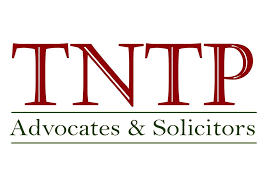To carry out the debt collection process effectively, businesses need to follow a specific procedure. Debt collection needs to be done in a sequence to ensure time, cost, and effort. In this article, TNTP will provide efficient debt collection steps for businesses.
Step 1: Negotiation
This is the first stage in the debt collection process, negotiating with the debtor for two main purposes: determining if the debtor has the intention to pay and initially assessing the debtor’s ability to pay. Specific tasks in the negotiation stage include:
1. Contacting the debtor via email and phone
The debtor uses the contact information provided to send payment requests, and using email and phone in the first step is fast and timesaving. The content of the exchange includes payment requests and the amount of payment. In case the debtor cannot be contacted through email and phone, the business can switch to contact via official letter.
2. Using payment request letters
When initial phone contact is ineffective, businesses need to draft payment request letters. The content of these letters is similar to that of payment requests made through email and phone, including: Request for payment of the debt, specific amount, and time of payment request; Legal measures if the debtor fails to make payment.
Payment request letters are usually sent by mail to the debtor’s address. The purpose of sending the letter is to determine whether the debtor is still operating at the registered address. If the debtor is no longer operating at the registered address, the business can use the returned mail as evidence that the debtor is not working at the registered address when dealing with the relevant state authorities.
Payment requests should accurately state the necessary information and should be accompanied by related documents so that the debtor has a basis for checking the debt. In addition, the content of the payment request letter must include a deadline for the debtor to respond, ensuring that the debtor responds promptly after receiving the business’s letter. Failure to respond will be considered uncooperative in the payment recovery process, which can impact the timeline for debt collection.
3. Work directly at the debtor’s headquarters
In case the enterprise has sent a request for payment but has not received any response from the debtor, the next step in debt recovery is to work directly at the debtor’s registered address. The enterprise needs to send an employee with necessary documents to request payment, and the purpose of working directly is to have a stronger impact on the debtor and to determine whether the debtor is still operating at the registered address, whether its operation is stable, and whether it is capable of payment.
One thing to note when meeting the debtor is that, besides the payment request, the enterprise needs to inquire about the reason why the debtor did not respond to previous letters, emails, or phone calls to determine whether the debtor is cooperative in the payment process. In addition, the employee working directly at the debtor’s address needs to request the authorized person, such as the accountant or director, to handle the debt to ensure that the payment request is accurately conveyed to the person who has the right to decide on payment. If the authorized person cannot be reached, the employee needs to prepare a handover record for the debtor’s staff to demonstrate that the enterprise has worked on the case and sent the necessary documents to request payment. These records can be used to prove the communication between the enterprise and the debtor in case the enterprise takes further action at the relevant state agency.
If the direct work with the debtor does not yield any result due to the debtor’s non-cooperation, the enterprise may consider filing a lawsuit at the relevant dispute resolution agency. This topic will be analyzed in the next article.
Above is part one of the article “Effective debt recovery steps for enterprises”. Hopefully, this article will be helpful for enterprises in their debt recovery process.
Best regards,





